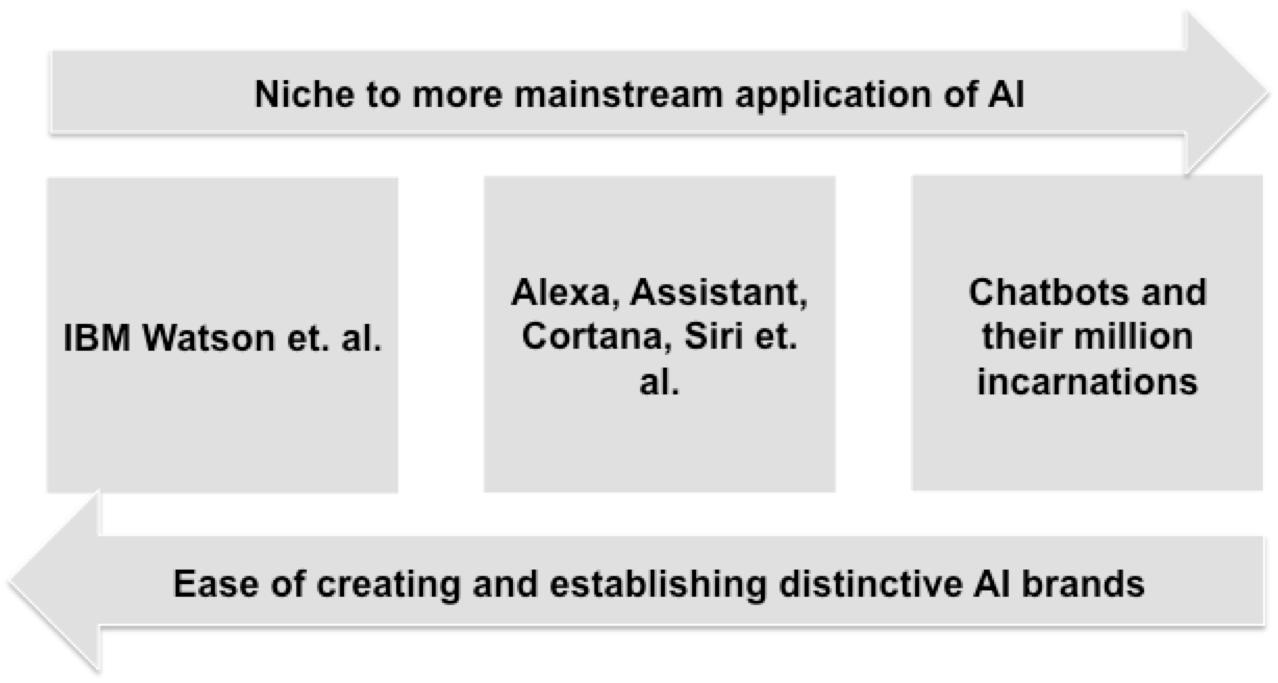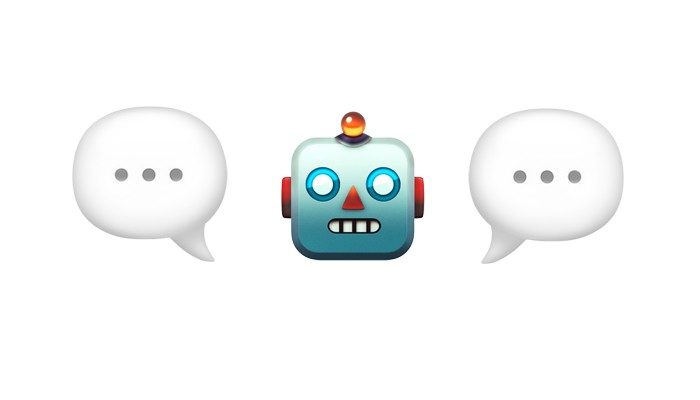by Sandeep Das
Going by the amount of media mentions and appearances in trend reports, it seems that artificial intelligence is the next big thing for brands to embrace. Attempts in crystal ball gazing are leading to visions of the future where the marketing mix has expanded beyond the 4Ps / 5Ps and the survival of brands are dependent on the ability of chat bots to magnify the impact of branded experiences and supercharge customer experience.
Applications of artificial intelligence have ranged from the generic chat bots to the success of Amazon’s Alexa. In between these two ends of the spectrum, we have Apple’s missed opportunity with Siri, a brand announcing that it will make all its future ads using AI and a logo design service that uses AI (instead of a human creative).
In this article, I am going to attempt to spin the argument on its head. Instead of further churning the topic of the importance of AI in branding, it might be worthwhile to discuss the create distinct brands of Artificial Intelligence.
Technology branding has always been a complex discipline and it goes much beyond model and version numbers.
In case of Artificial Intelligence, branding is an even more challenging task because there is no physical interface (or at least not in each and every application of AI). AI is advanced application of machine learning, which consumers can only experience through an interface. There are only two possible interfaces at this point:
- Physical interface — Amazon Echo, Google Home, Microsoft Windows 10 PCs (in the future) and all Apple iPhones (they are distinct physical interfaces first before they are interfaces with distinct AI applications)
- Virtual interface — All online platforms employing and using chat bots, enabling direct consumer interaction (accessibility is through the billions of computers and mobile phones owned by human beings where the physical interface is a generic entity)
The battle to invade a consumer’s life and his or her home with artificial intelligence is hotting up but the playing field is not even.
Amazon’s Alexa cannot succeed without the existence of the Echo. But Amazon has been smart enough to position the machine learning capabilities of Alexa as a driver for Echo’s sales. The physical interface (Echo) is positioned with the elements of style and design prowess, while the application (Alexa) builds on that positioning through its continuous machine learning capabilities.
Google on the other hand, has suffered, because it has positioned only the physical interface (Google Home), without emphasising the abilities of the actual AI application (Google Assistant).
On the other hand, Apple and Microsoft, till now, have under utilised their respective AI applications (Siri and Cortana respectively) even though the number of physical interfaces they had at their disposal is wide ranging — Apple’s who “i” series of devices to Microsoft’s range of computing devices. Google seems to have woken up to the opportunity of maximising the impact of Google Assistant by announcing its availability across a wide range of Google devices.
Apple and Microsoft’s failure, Google’s reluctance till now and Amazon’s need to establish the physical interface first (before pushing Alexa’s capabilities) highlight a fundamental challenge with Artificial Intelligence Branding — consumers want to experience AI through unique physical interfaces.
In this November 2016 article, columnist Jeff Dunn made Google Assistant, Alexa, Siri and Cortana go through their paces by subjecting their AI capabilities on 12 individual tasks. The results are surprising with no one AI application dominating the list of winners.
This experiment highlights the second challenge behind the branding of Artificial Intelligence — Consumers will buy an AI application convinced by its over-arching proposition of being a ‘problem solver’, but it is challenging to develop an AI brand with a specific and niche positioning. We can have 2 more Alexa’s and 2 more Siri’s from reputed technology giants and consumers will buy into them.
The concept of developing distinct artificial intelligence brands is not new. IBM was the first to taste success of branding an application of AI through Watson. Starting from being an advanced natural language processing machine, the Watson brand proposition (along with advancements in computational and processing capabilities) has now expanded into a cognitive solutions business for IBM.
From the upper echelons of Artificial Intelligence we now look into the more mainstream application in chatbots. In the truest sense of the word, branding of chatbots is very specific to the brands designing and using them, and chatbots necessarily don’t compete with each other.
The rate at which chatbots are being created and used by brands is indicative of product proliferation, which has its own pitfalls. The “bandwagon” mindset will slowly but surely make chatbots a hygiene factor in our daily interaction and engagement modes with technology. In sum, you cannot make distinctive brands if chatbots is the end application in mind.

There is a simple, yet effective, strategic imperative in terms of branding of AI applications:
Creating distinctive brands of AI applications requires a leap in the capabilities of AI — from helping us “remember” to helping us “think”
The ability to think (creatively, strategically, with intent, structured etc.) has always been a defining capability of mankind. A large part of what we achieve in life and create happiness is dependent on how we think. Thinking has always been an integral part of distinctive brand building efforts. This is not a loose allegory, but the word “Think” has been part of quite a few powerful advertising campaigns — Think Small, Think Different etc.
If we leave the more niche, complex and advanced applications for the time being, Artificial Intelligence is becoming more mainstream and widespread in its applications. But the applications of AI (either through physical or virtual interfaces) is still quite transactional. Applications like Alexa, Google Assistant help us in “organising” aspects of our lives, while chatbots help in “answering our questions.”
Copying a leaf from the book of brand building principles, transactional relationships don’t result in the creation of strong brands. On the other hand, emotionally deep relationships result in strong brands. These principles will also hold in the case of branding artificial intelligence applications.
At this point, the application of AI in helping us think is still a very niche area. Here is one application and one perspective on AI’s ability to think:
The problem is determining when an AI has achieved the capacity to think.”
Physical interfaces as purveyors of the benefits of Artificial Intelligence have short product life spans (and especially in the technology industry). To create distinctive brands of AI applications, developers need to start thinking beyond solving for a human being’s lack of organisation or need for information. Distinctive AI brands should help elevate human thinking (by pushing us to use more than 10% of our brain’s capacity), thereby enabling us to solve problems that impact wider communities, nations or societies as a whole.
This article was originally published in LinkedIn Pulse.
Original article from:
https://medium.com/on-advertising/branding-artificial-intelligence-9716adc5a2f6
